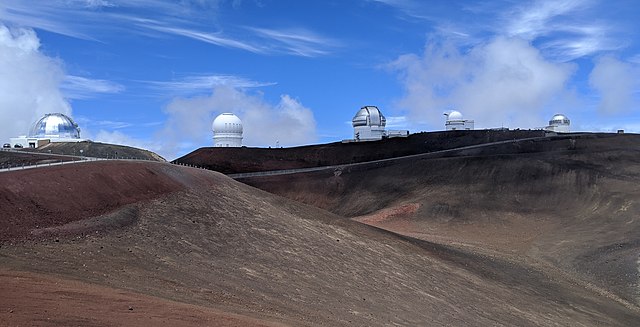Salacia is a large trans-Neptunian object in the Kuiper belt, approximately 850 km (530 mi) in diameter. It was discovered on 22 September 2004, by American astronomers Henry Roe, Michael Brown and Kristina Barkume at the Palomar Observatory in California, United States. Salacia orbits the Sun at an average distance that is slightly greater than that of Pluto. It was named after the Roman goddess Salacia and has a single known moon, Actaea.
Keck Telescope image of Salacia (bright, center) and its moon Actaea (faint, at left)
The Kuiper belt is a circumstellar disc in the outer Solar System, extending from the orbit of Neptune at 30 astronomical units (AU) to approximately 50 AU from the Sun. It is similar to the asteroid belt, but is far larger—20 times as wide and 20–200 times as massive. Like the asteroid belt, it consists mainly of small bodies or remnants from when the Solar System formed. While many asteroids are composed primarily of rock and metal, most Kuiper belt objects are composed largely of frozen volatiles, such as methane, ammonia, and water. The Kuiper belt is home to most of the objects that astronomers generally accept as dwarf planets: Orcus, Pluto, Haumea, Quaoar, and Makemake. Some of the Solar System's moons, such as Neptune's Triton and Saturn's Phoebe, may have originated in the region.
Pluto and Charon
Astronomer Gerard Kuiper, after whom the Kuiper belt is named
In 1980, astronomer Julio Fernandez predicted the existence of a belt. It has been said that because the words "Kuiper" and "comet belt" appeared in the opening sentence of Fernandez's paper, this hypothetical region was referred to as the "Kuiper belt".
The array of telescopes atop Mauna Kea, with which the Kuiper belt was discovered





